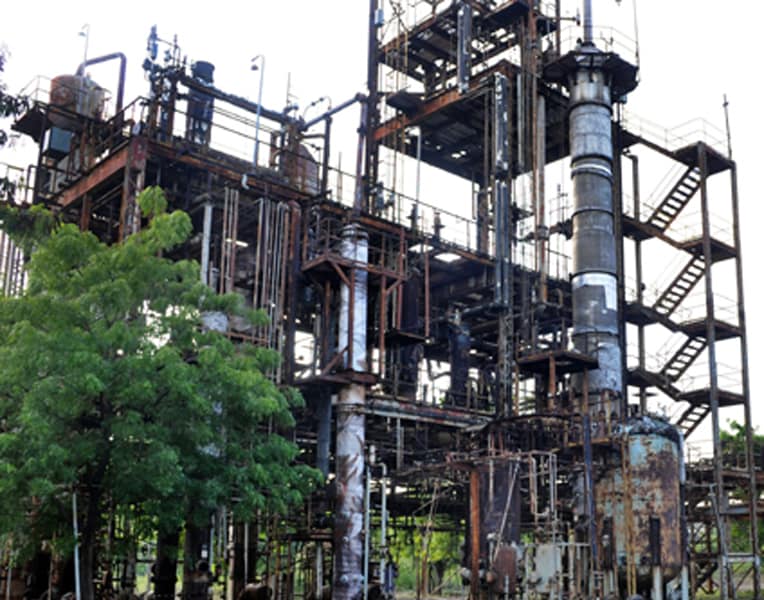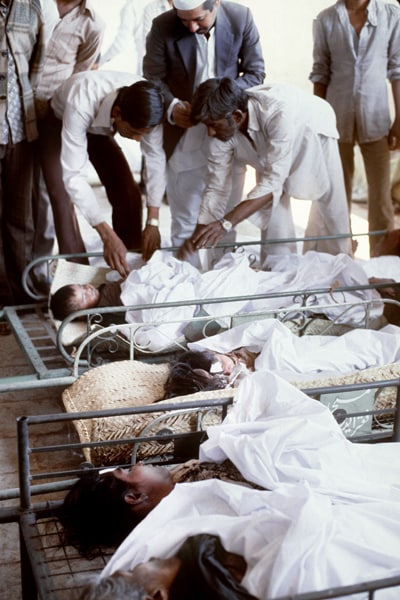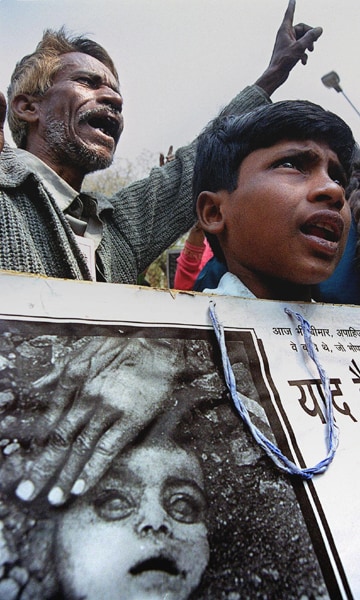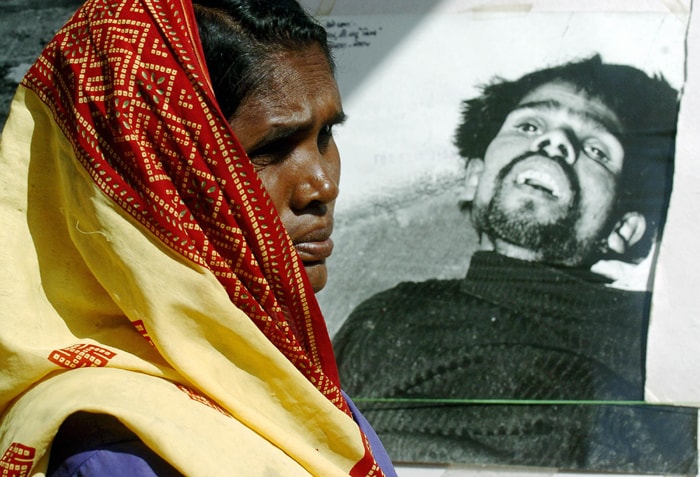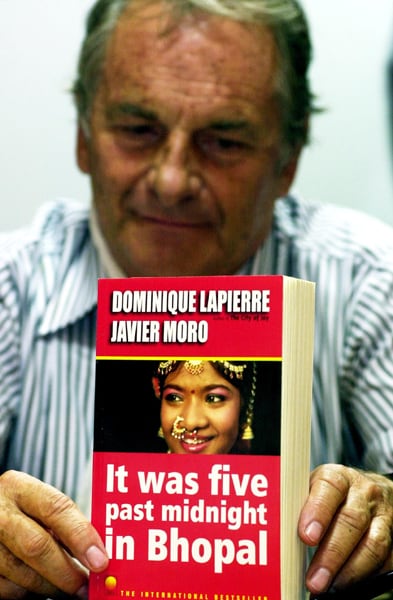Bhopal Gas Tragedy: Verdict and After
Bhopal Gas Tragedy in pictures
-
It has been 26 long years since one of the world's worst industrial disasters struck Bhopal. However, even today only nine percent of the victims have been compensated.
On the 26th anniversary, here's a look at how millions of lives changed after the tragedy.
On June 7, eight people convicted for the Bhopal industrial disaster were sentenced to two years in prison by a court in Bhopal. However, they were granted bail shortly after the judgement was pronounced.
The leak at the Union Carbide plant was the worst industrial disaster in history. Forty tonnes of a toxin called methyl isocyanate leaked from the factory and settled over slums on 3 December 1984.
Over 20,000 people were killed within days, and the horrific effects of the gas continue to this day.
The eight people convicted include former senior officials of the Union Carbide company, including senior Indian businessman Keshub Mahindra, who was the chairman of the company when the incident happened. -
The Chief Judicial Magistrate pronounced the verdict in a packed court room convicting 85-year-old former Union Carbide Chairman Keshub Mahindra (seen in this picture), and seven others in the case relating to leakage of deadly methyl isocyanate gas on the intervening night of December 2-3, 1984.
-
Out of the nine initially tried for the offences, R B Roy Choudhary, the then former Assistant Works Manager Union Carbide India Ltd (UCIL), Mumbai, died during the trial.
Others found guilty include Vijay Gokhle, the then Managing Director of UCIL, Kishore Kamdar, the then Vice President, J N Mukund, the then Works Manager, S P Choudhary, the then Production Manager, K V Shetty, the then Plant Superintendent and S I Quershi, the then Production Assistant. (AFP Photo) -
The Union Carbide factory still stands in Bhopal like a haunting symbol of the worst tragedy of the industrial era, etched in the memory of millions of Indians.
After 26 years, there are as many questions unanswered as the number of people who have died since that fateful day. (AFP Photo) -
Death crept into the lives of Bhopal residents in the form of a white cloud. Methyl isocyanate gas leaked from the factory, affecting more than 8 lakh people. Government estimates said 15,000 people died within days of the gas leak. Thousands have died since, many permanently maimed. (AFP Photo)
-
Victims say Anderson, as the head of the company, knew that the plant stocked toxic gas within city limits and that it could cause huge damage in case of an accident. And that the security precautions were inadequate. Anderson is believed to have taken key decisions, including a cost-cutting measure that compromised safety at the gas plant.
-
In the days after the gas leak, Anderson was arrested and then released on bail by the Madhya Pradesh Police on December 7, 1984. He has never appeared in court or even been in India to explain what happened. Union Carbide paid compensation that victims have said was grossly inadequate. There has been huge hue and cry over the fact that Anderson was allowed to quietly leave the country even as Bhopal reeled under tragedy. (AFP Photo)
-
In 1992, Anderson was declared a fugitive by the Bhopal court for failing to appear for hearings in a case of culpable homicide. Once he was declared absconding, the cases were separated and so Warren Anderson was not a part of the case in which eight Indians then employed by Union Carbide have been convicted today. In July 2009, an arrest warrant was issued for him after an appeal by a victims' group. (AFP Photo)
-
The government has come in for much criticism over the way it handled the Anderson case. It took the government almost 19 years to move a formal request for his extradition. It did so in May 2003. In June 2004, however, the US rejected India's request for the extradition of Anderson. (AFP Photo)
-
The case initially comprised of several charges but eventually the Union Carbide Corporation has only been convicted with causing death by negligence, culpable homicide not amounting to murder and gross negligence. During the trial, a total of 178 prosecution witnesses were examined and 3008 documents were produced while eight defence witnesses deposed in the court. (AFP Photo)
-
After the gas leak, many pregnant women suffered miscarriages, while others delivered still born babies. More than half the children exposed to the gas in their mothers' wombs died. Many others were born with deformities. In the post-gas era, such children were called 'Carbide children'. (AFP Photo)
-
Union Carbide Corporation (UCC) and Dow Chemicals, which took over UCC in 2001, did not take responsibility for the leak. UCC, however, abided by a 1989 Supreme Court ruling asking it to pay compensation of $470 million after a long legal battle in the US and India.
-
The blinded victims of the Bhopal tragedy sit in the street and wait to be treated in Bhopal a day after the tragedy. Survivors of the world's worst industrial disaster in India's Bhopal city were outraged by plans to throw open the site to visitors 26 years after the tragedy that killed thousands. (AFP Photo)
-
People carry torches during a march to mark the 24th anniversary of the Bhopal gas tragedy on December 2, 2008. The cause of the catastrophe was a cloud of Methyl Isocyanate leaked from the Union Carbide chemical plant, early morning on December 3, 1984. (AFP Photo)
-
A victim of the 1984 Bhopal gas tragedy displays anti-government and anti-Union Carbide placards during a protest near Parliament on November, 23, 2001. Hundreds of protesters demanded that the government take immediate steps to extradite former Union Carbide chairman Warren Anderson and other representatives to India, to have them stand trial in Bhopal. (AFP Photo)
-
French best-selling author Dominique Lapierre displays a copy of the English translation of his book on the Bhopal Union Carbide gas tragedy titled: "It Was Five Past Midnight in Bhopal", during a press conference in New Delhi on September 6, 2001. (AFP Photo)



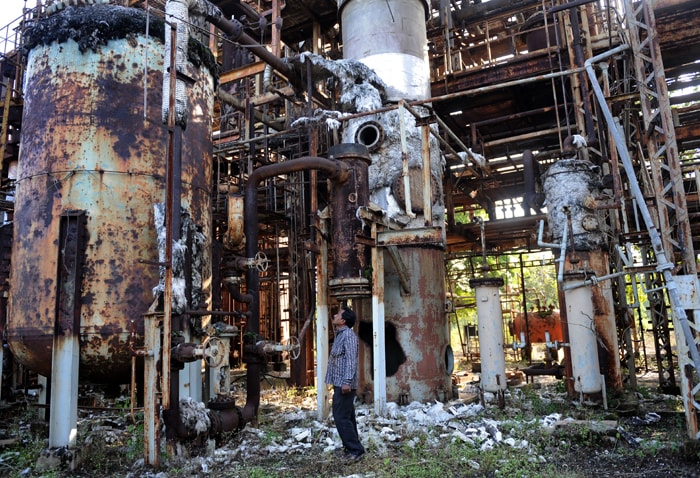

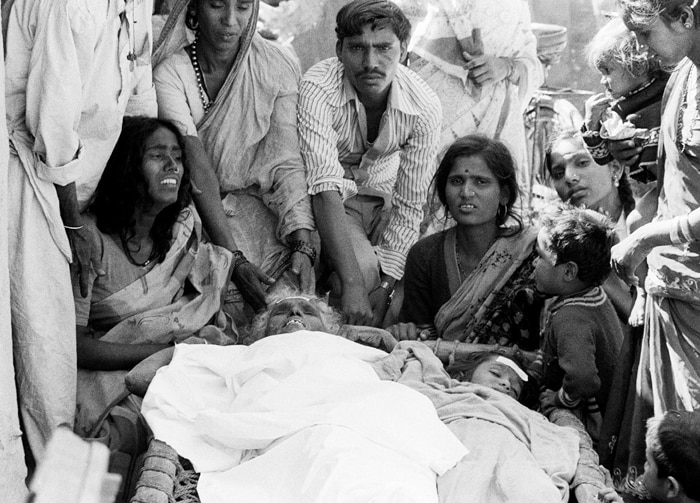

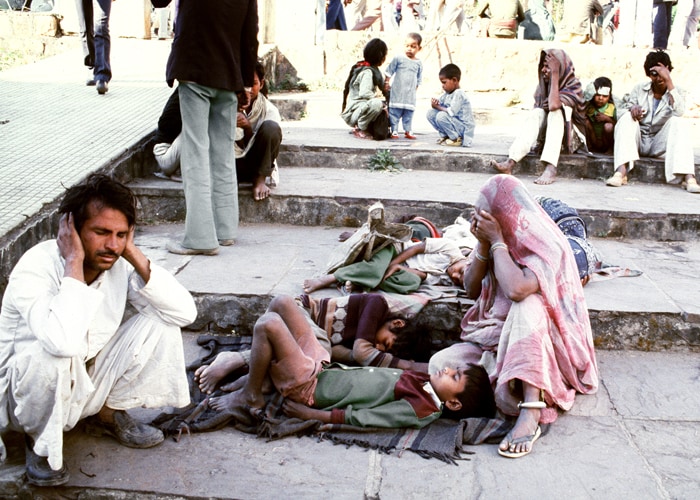

.jpg)
.jpg)

.jpg)
